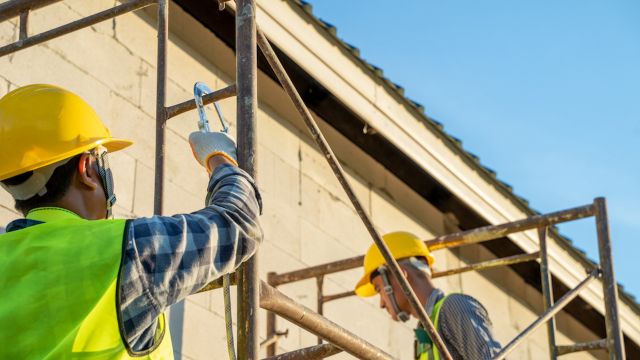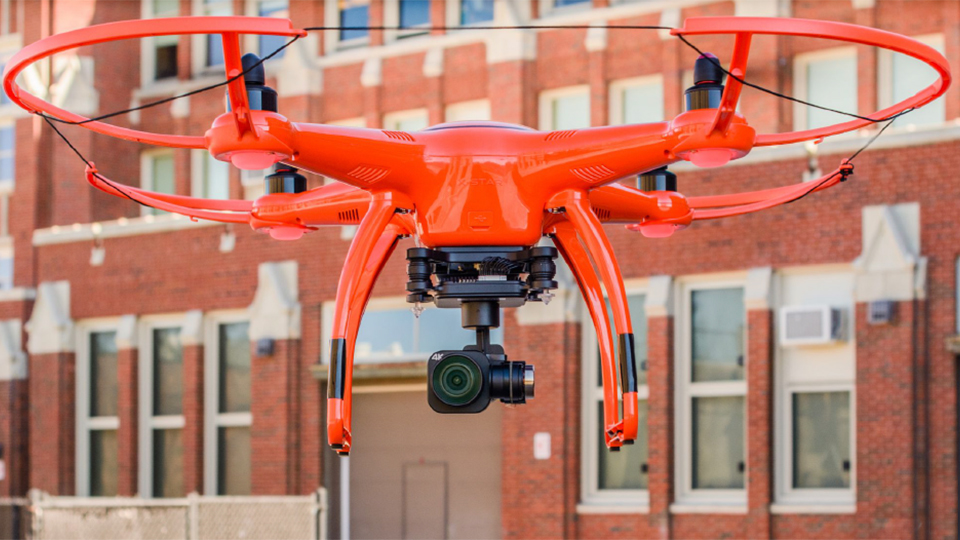A Tall Task: Height Safety Q&A
We sat down with two MCAA Safety Advantage Award winners from 2020 and discussed the importance of height safety on a jobsite. Check out their experiences with height safety and the techniques that work for them on a day-to-day basis. We’d like to thank Brandon Hartsell of Gates Construction Company, Inc. and Paul Cantarella Jr. of Cantarella and Son Inc. for taking the time to talk with us.
What does training for height safety look like?
Paul Cantarella Jr.: Two of the most important things we train on are fall protection training and the proper fit and use of a safety harness. Another would be going over your jobsite-specific rescue plan.
Brandon Hartsell: The purpose of our program is to establish requirements for working at heights that exceed or are equal to the fall protection requirement height threshold and where guardrails, safety nets, or other engineering controls are not present because Gates Construction Co. Inc. could work on both general industry, construction, or other industry sites.
The fall protection requirement height threshold will vary. Therefore, the fall protection requirement height shall be determined by the industry list below and the corresponding fall protection requirement height thresholds:
Important Note: OSHA requires that fall protection be provided at elevations of 4 feet or more in general industry workplaces, 5 feet or more in shipyards, 6 feet or more in the construction industry, and 8 feet or more in long shoring operations. Also, OSHA requires that fall protection be provided when working over dangerous equipment and machinery, regardless of the fall distance. Therefore, threshold heights & requirements will vary depending on the type of job being performed. Please refer to 29CFR for detailed specifications.
Additional Note: Some states have state-specific fall protection criteria, which Gates Construction Co. Inc. must comply with. Therefore, the safety manager’s responsibility is to determine when state-specific fall protection requirements conflict with Federal OSHA requirements and establish fall protection criteria for that site’s fall protection plan.
What does your safety plan consist of when it comes to height/fall protection and safety?
Paul Cantarella Jr.: Most importantly, it outlines our core values on safety well at heights, with the six-foot rule being the max height allowed without fall protection unless guardrails are in place. Our plan details the procedure for fall protection and what fall protection to use in different scenarios. It also points out that our competent person will determine the feasibility and safety of providing fall protection for employees depending on the need.
Brandon Hartsell: Anytime a Gates Construction Co. Inc. employee intends to work at or above the fall protection threshold height, guardrails, safety nets, personal fall arrest systems, or other approved fall protection systems shall be used.
Fall protection requirement height thresholds depend solely upon the nature of the site or client location and shall be used per the following industry criteria list:
Non-Construction Environments: 4 feet or more
Construction Environments: 6 feet or more
Shipyards: 5 feet or more
Longshoring Environments: 8 feet or more
Site-Specific Fall Protection Plan
Whenever site-specific fall protection plans are utilized, the plan may only be developed by a qualified person. The plan must also consider the site-specific requirements, which initially called for using a site-specific fall protection plan.
Whenever conventional fall protection is not feasible or creates a more significant hazard than the fall itself, a fall protection plan may be used. In these cases, the site-specific plan shall include why conventional fall protection methods are not feasible, the locations of the areas where traditional fall protection is not possible. These areas shall also be classified as “controlled access zones.”
Fall Protection Equipment
All fall protection equipment shall meet the requirements of applicable ANSI, ASTM, or OSHA requirements.
Rescue
In the event of a fall, GATES CONSTRUCTION CO. INC. shall ensure the affected employee’s prompt rescue (s). GATES CONSTRUCTION CO. INC. shall ensure that rescue details are established before the commencement of work at elevated heights.
In your experience, what has been the most beneficial thing you’ve done on a jobsite to ensure height safety?
Paul Cantarella Jr.: Hands down, it would be using mast climbers. Whether it be Hydro Mobile (motor driven) or Non-Stop Scaffold (crank up), safety is always in place.
Brandon Hartsell: Train our folks correctly and adhere to our Manual.
How do you encourage safety while working at heights or on scaffolding?
Paul Cantarella Jr.: By constantly reminding the crew of the risks involved when working at heights and watching out to keep all the employees safe. I will also remind the crew when leaving or getting onto the scaffold to check components as they walk by while on their way to the spot where they’re working. For example, making sure foot planks have no cracks and have the proper lap or that the outriggers have no cracked welds. Our shop manager does his best to go through all the equipment at the shop when it comes back in, but a second or third set of eyes never hurt when it comes to being safe at heights.
Brandon Hartsell: We ask the question: Wouldn’t you like to go home and see your family tonight? Let’s work safe, put good work in place, and finish out the day safe.
What kind of PPE does your company use to ensure safety when working at heights?
Paul Cantarella Jr.: The safety harness is the key PPE for working at heights. We have been using the Warthog Comfort Maxx by Malta Dynamics; the crew loves the fit, and they are reasonably priced. After that, it would be what kind of lanyard do you need: fall protection or fall restraint.
Brandon Hartsell: Lanyard with shock absorbers, lifelines, and ensuring all equipment is in good condition and working correctly. Lastly: training, training, training.
What tips would you give to anyone creating a safety plan?
Paul Cantarella Jr.: There is plenty of helpful safety information available on the MCAA website to help you start to build a plan. Secondly, I would make sure you review it with a construction safety professional from your area.
Brandon Hartsell: Most important tip is to work with a mentor to develop a good/strong plan. Many people in this industry will put out their hands and help a fellow contractor out.
What are some common errors you’ve seen when it comes to height safety?
Paul Cantarella Jr.: The biggest I’ve seen are workers removing the guard rail to let the lull drop off some mortar or material and not being tied off during the process. The second is seeing contractors being lazy and not building loading docks for the material. Instead, they use outriggers — which are made to support workers, not material. When at heights, this can exert force/load to the scaffold’s back, which it’s not designed for.
Brandon Hartsell: Not being tied off and safety equipment used improperly are the two I’ve seen.
About the Author
















